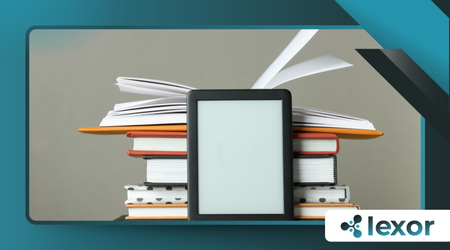What Is an eReader and How Does It Work?

The digital revolution has transformed how we consume literature, and at the heart of this shift lies a powerful yet often misunderstood device: what is an eReader.
These sleek gadgets have evolved far beyond their early iterations, offering unparalleled convenience for bibliophiles and casual readers alike.
But how exactly do they function, and why are they still relevant in an era dominated by smartphones and tablets?
While tech giants push multipurpose devices, eReaders remain the go-to choice for serious readers. Their secret?
A laser-focused design that prioritizes readability, battery efficiency, and eye comfort over flashy features.
A 2024 report by the International Digital Publishing Forum revealed that eReader users read 30% more books annually than those relying solely on physical copies or conventional screens.
This statistic alone underscores their enduring appeal.
So, what is an eReader in practical terms? Imagine carrying an entire library in your bag, with no glare under sunlight and weeks of battery life.
That’s the magic of these devices they strip away distractions and bring back the joy of immersive reading.
The Anatomy of an eReader: More Than Just a Screen
Unlike traditional tablets, eReaders prioritize readability over multimedia capabilities. Their secret weapon?
This process consumes minimal energy, allowing weeks of battery life
E Ink technology. This innovative display mimics the appearance of printed paper, reducing eye strain and offering superior visibility in direct sunlight.
But it’s not just about the screen. Modern eReaders, like the Kindle Paperwhite (2025), feature adjustable warm lighting, waterproof designs, and even stylus support for note-taking.
These refinements make them versatile tools for students, professionals, and leisure readers alike.
Another key component is the frontlight—a layer of LEDs that evenly illuminates the screen without causing the harsh glare of backlit displays.
This is why reading on an eReader at night feels closer to a physical book than scrolling on a phone.
Example: A law student preparing for exams can highlight case law on a Kobo Elipsa 2E without worrying about battery drain or eye fatigue—something no tablet can match.
Read more about the other topic: Teaching Letters and Numbers with Tech: A Parent’s Guide
How eReaders Work: The Science Behind the Magic
At their core, eReaders rely on electrophoretic displays.
Millions of microcapsules containing charged black and white particles shift positions when an electric current is applied, forming text and images without backlighting.
This process consumes minimal energy, allowing weeks of battery life. Unlike LCD screens that refresh constantly, E Ink only uses power when the page changes.
That’s why an eReader can last a month on a single charge while a tablet struggles to make it through a weekend trip.
But how does this translate to real-world use? Consider this analogy: if a smartphone is a bustling city full of ads, notifications, and distractions an eReader is a tranquil library.
One overwhelms with stimuli; the other fosters deep focus.
Example: When reading a novel on a Kindle Oasis, the lack of blue light and flicker-free display means you can binge-read for hours without the headaches associated with traditional screens.
Read more about the other topic: Gamified Learning for Preschoolers: Does It Work?
Why eReaders Still Dominate in 2025
Critics argue that tablets render eReaders obsolete. Yet, sales tell a different story. The global eReader market is projected to reach $15.6 billion by 2026 (Statista, 2024).
Why? Because what is an eReader excels at simplicity cannot be replicated.
Tablets tempt with apps, games, and videos, but that’s precisely their downfall for dedicated readers. The absence of distractions on an eReader leads to better retention and a more immersive experience.
Example: A student studying under the sun would struggle with glare on an iPad but enjoy crisp text on a Kobo Libra 2.
Similarly, a traveler packing light can bring dozens of books without the weight of paperbacks.

The Future of eReaders: What’s Next?
Emerging technologies like color E Ink and foldable displays hint at a vibrant future.
Companies like Onyx Boox already offer eReaders with Android OS, bridging the gap between tablets and dedicated reading devices.
Could what is an eReader eventually replace paperbacks entirely? Perhaps not, but their niche is secure.
Innovations like dynamic refresh rates and AI-powered text formatting ensure they stay ahead of the curve.
Example: The PocketBook InkPad Color 3 proves that eReaders can handle comics and textbooks without sacrificing battery life—something tablets still struggle with.
Read more about the other topic: The Role of Interactive Whiteboards in Preschool Classrooms
eReaders vs. Tablets: Which One Should You Choose?
The debate between eReaders and tablets isn’t about superiority—it’s about purpose. Tablets excel at multimedia, while eReaders reign supreme for long-form reading.
If you consume magazines, videos, and social media, a tablet makes sense. But if you want a device purely for books, an eReader’s eye comfort and battery efficiency are unbeatable.
Example: A journalist covering events might prefer an iPad for its versatility, but a novelist editing a manuscript would benefit from the distraction-free environment of a Remarkable 2.
Conclusion: The Unmatched Value of eReaders
In a world drowning in digital noise, eReaders remain a beacon of focused reading. Their unique technology, evolving features, and unwavering commitment to readability ensure they stay relevant.
Will they replace tablets? No. But for those who cherish books, what is an eReader is the perfect companion.
For further reading, explore: What is an e-reader?
Frequently Asked Questions (FAQs)
1. Can eReaders display PDFs and EPUB files?
Yes, most modern eReaders support multiple formats, including PDF, EPUB, and MOBI.
2. Do eReaders work in the dark?
Yes, models with frontlights (like Kindle Paperwhite) allow reading in low-light conditions.
3. How long does an eReader battery last?
Typically 4-8 weeks, depending on usage.
4. Are eReaders bad for your eyes?
No, E Ink screens reduce eye strain compared to LCD/OLED displays.
5. Can I read comics on an eReader?
Yes, color eReaders like the PocketBook InkPad Color 3 are ideal for graphic novels.
Will you join the eReader revolution?
